Monkey Puzzle Tree
- November 16, 2023
- 0 comment
The Monkey Puzzle Tree, scientifically known as Araucaria araucana, is a distinctive and ancient evergreen tree that hails from the temperate rainforests of South America. Revered for its unique appearance, the tree is characterized by its sharply pointed, overlapping leaves that spiral up the branches, creating a distinctive “monkey puzzle” pattern.

The Monkey Puzzle Tree can reach impressive heights of up to 100 feet, with a straight trunk and branches that grow in a regular, tiered fashion. Notably, this tree is considered a living fossil, dating back to the time of dinosaurs. Its name, “monkey puzzle,” supposedly originated in the 19th century when someone remarked that the complex, spiky branches would puzzle even a monkey trying to climb it.

Despite its origins in South America, the Monkey Puzzle Tree has found its way into cultivation around the world, appreciated for its ornamental value and intriguing form. It is often planted in parks and gardens, adding a touch of prehistoric allure to landscapes. However, the tree is also classified as endangered in its native habitat due to overharvesting and habitat loss, highlighting the importance of conservation efforts to protect this ancient and fascinating species.
| Characteristic | Description |
|---|---|
| Scientific Name | Araucaria araucana |
| Common Name | Monkey Puzzle Tree |
| Family | Araucariaceae |
| Native Habitat | South America, primarily Chile and Argentina |
| Height | Up to 100 feet (30 meters) |
| Foliage | Evergreen, sharply pointed, overlapping leaves |
| Trunk | Straight and tall |
| Growth Pattern | Branches grow in a regular, tiered fashion |
| Notable Feature | Spiral arrangement of leaves, creating a “monkey puzzle” pattern |
| Age | Considered a living fossil, dating back to the time of dinosaurs |
| Conservation Status | Endangered in its native habitat due to overharvesting and habitat loss |
| Uses | Ornamental tree in parks and gardens |
| Significance | Appreciated for its unique appearance and ancient lineage |
Botanical Beauty of the Monkey Puzzle Tree
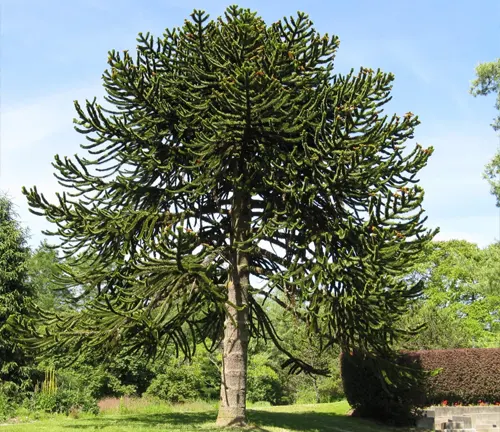
The Monkey Puzzle Tree, scientifically known as Araucaria araucana, stands out as a botanical marvel with its captivating features. This evergreen tree, native to the temperate rainforests of South America, is a visual spectacle. The distinctive arrangement of sharply pointed, overlapping leaves creates a mesmerizing spiral pattern along the branches, earning the tree its intriguing moniker. As a living fossil that dates back to the time of dinosaurs, the Monkey Puzzle Tree not only captures attention for its historical significance but also for its sheer botanical beauty.
Woodland Elegance
In the realm of trees, the Monkey Puzzle Tree reigns supreme in woodland elegance. With a towering height that can reach up to 100 feet and a straight, majestic trunk, this species commands attention in its natural habitat. The branches grow in a tiered fashion, contributing to the tree’s regal and symmetrical appearance. Whether standing alone or as part of a lush forest, the Monkey Puzzle Tree adds a touch of prehistoric grace to the landscape, creating a scene of unparalleled woodland elegance.
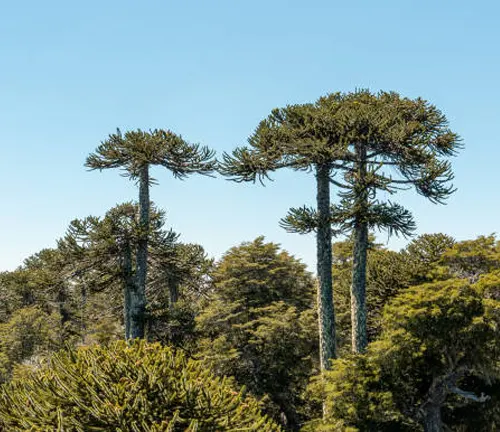
Ecological Importance
Beyond its aesthetic allure, the Monkey Puzzle Tree plays a vital role in the ecosystems it inhabits. Native to regions of Chile and Argentina, this evergreen giant provides essential habitat and sustenance for various wildlife species. The unique structure of its branches offers nesting sites for birds, while its seeds serve as a crucial food source for local fauna. Additionally, the Monkey Puzzle Tree contributes to biodiversity, playing a part in the intricate web of life within its native environment.

Cultivation and Conservation
As a testament to its global appeal, the Monkey Puzzle Tree has found a place in cultivation far beyond its South American origins. Planted in parks and gardens worldwide, it serves as an ornamental treasure, captivating onlookers with its ancient charm. However, despite its widespread popularity, the species faces conservation challenges. Overharvesting and habitat loss in its native habitat have led to the Monkey Puzzle Tree being classified as endangered. Conservation efforts are crucial to preserving this botanical wonder for future generations.

Fragrance
While the Monkey Puzzle Tree is not renowned for its fragrance in the traditional sense, the fresh, clean scent of its evergreen needles adds a subtle yet delightful note to the surrounding air. Strolling through a grove of these ancient trees provides a sensory experience, connecting visitors with the natural world in a unique olfactory way.
Soil Stabilization
Beyond its visual and aromatic qualities, the Monkey Puzzle Tree plays a practical role in soil stabilization. The extensive root system of this species helps prevent soil erosion, making it an invaluable asset in regions where erosion control is essential. This characteristic enhances the tree’s ecological importance, showcasing its multifaceted contributions to the environment.
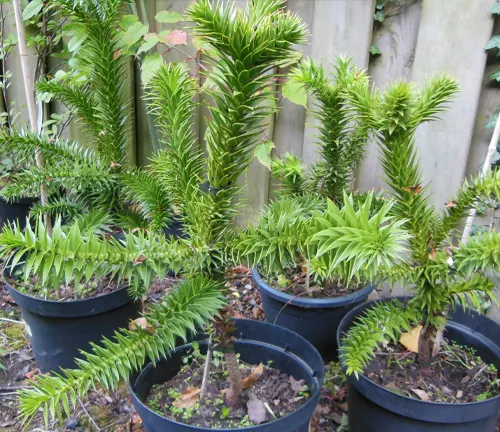
Common Uses
Apart from its role in natural ecosystems, the Monkey Puzzle Tree has found common uses in human landscapes. Its distinct appearance makes it a popular choice for ornamental planting in parks, botanical gardens, and private estates. The tree’s unique silhouette and historical significance add a touch of sophistication to designed landscapes, making it a favored selection among horticulturists and landscape architects.
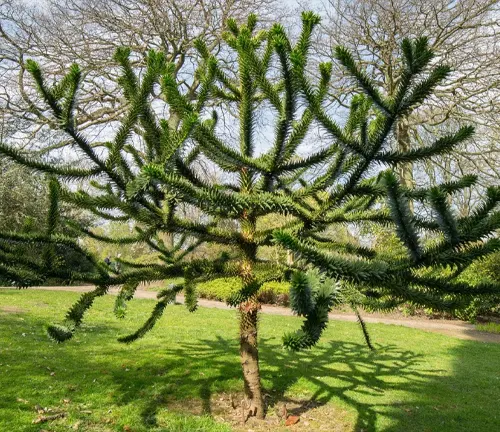
Benefits
The Monkey Puzzle Tree, with its rich history, unique appearance, and ecological contributions, offers a host of benefits. From providing habitat for wildlife to enhancing the aesthetic appeal of landscapes, this tree stands as a testament to the intricate connections between botanical beauty and environmental significance. Conservation efforts aimed at preserving this species are not just about protecting a single tree but ensuring the continued interplay of nature’s wonders for generations to come.
Different Species
Araucaria bidwillii
(Bunya Pine)
Native to Australia, the Bunya Pine is closely related to the Monkey Puzzle Tree. It shares the characteristic of large, symmetrical branches with overlapping, sharply pointed leaves. The Bunya Pine produces large, edible seeds and is known for its majestic presence in the Australian landscape.

Araucaria heterophylla
(Norfolk Island Pine)
Although different in appearance from the Monkey Puzzle Tree, the Norfolk Island Pine is another notable member of the Araucaria genus. Native to Norfolk Island in the Pacific, it features distinctive whorls of horizontal branches with softer, needle-like leaves. This species is often cultivated as an ornamental tree in various regions.
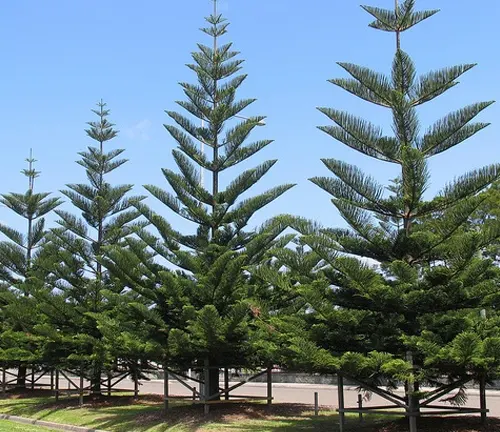
Araucaria angustifolia
(Paraná Pine)
Found in South America, primarily in Brazil, Araucaria angustifolia is another member of the genus. Commonly known as Paraná Pine, it shares some visual characteristics with the Monkey Puzzle Tree, such as the conical shape and spirally arranged leaves. This species has faced significant threats due to logging and habitat loss.
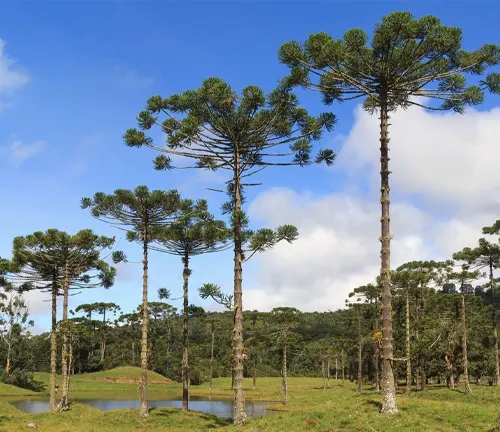
Araucaria cunninghamii
(Hoop Pine)
Native to Australia and New Guinea, the Hoop Pine is a large evergreen tree that belongs to the Araucaria genus. It has a more conventional conical shape with a straight trunk and branches that form a uniform crown. The leaves are needle-like, and this species is commercially important for timber production.
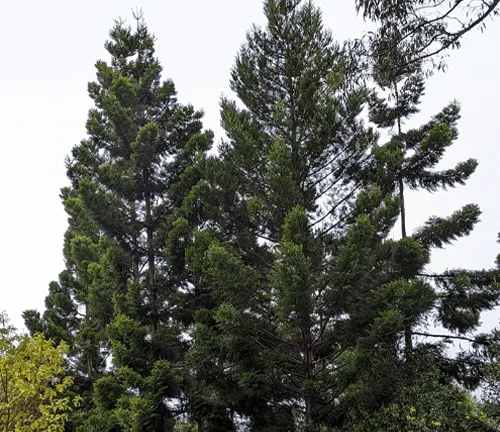
Frequently Asked Questions (FAQs)
- What is the Monkey Puzzle Tree?
The Monkey Puzzle Tree, scientifically known as Araucaria araucana, is an evergreen tree native to the temperate rainforests of South America. It is known for its distinctive appearance, featuring sharply pointed, overlapping leaves that create a unique spiral pattern. - Why is it called the Monkey Puzzle Tree?
The name “Monkey Puzzle” is believed to have originated in the 19th century when someone remarked that the complex, spiky branches would puzzle even a monkey trying to climb it. - How tall does the Monkey Puzzle Tree grow?
The Monkey Puzzle Tree can reach impressive heights of up to 100 feet (30 meters), with a straight trunk and branches that grow in a tiered fashion. - Where is the Monkey Puzzle Tree native to?
The tree is native to the temperate rainforests of South America, primarily in Chile and Argentina. - Is the Monkey Puzzle Tree endangered?
Yes, the Monkey Puzzle Tree is classified as endangered in its native habitat due to factors such as overharvesting and habitat loss. - What is the significance of the Monkey Puzzle Tree as a living fossil?
The Monkey Puzzle Tree is considered a living fossil because it dates back to the time of dinosaurs, making it a unique and ancient species that has survived for millions of years. - Can the Monkey Puzzle Tree be cultivated outside of its native habitat?
Yes, the Monkey Puzzle Tree is cultivated worldwide for its ornamental value. It is often planted in parks and gardens, contributing to landscapes with its distinctive form. - What is the ecological importance of the Monkey Puzzle Tree?
The tree plays a vital role in ecosystems by providing habitat and sustenance for wildlife. Its branches offer nesting sites for birds, and its seeds are a crucial food source for various animals. - Does the Monkey Puzzle Tree have any common uses?
Apart from its role in natural ecosystems, the Monkey Puzzle Tree is commonly used for ornamental planting in parks, gardens, and private estates, adding a touch of prehistoric charm to designed landscapes. - Are there different species of Monkey Puzzle Trees?
The Monkey Puzzle Tree, Araucaria araucana, is a specific species. However, there are other Araucaria species, such as Araucaria bidwillii (Bunya Pine) and Araucaria heterophylla (Norfolk Island Pine), which share similarities but are distinct.


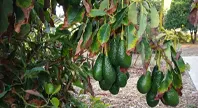
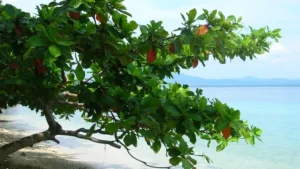






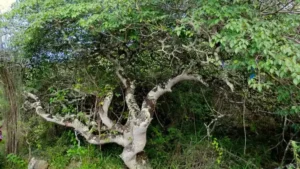
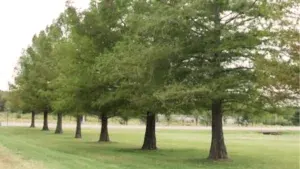


Leave your comment